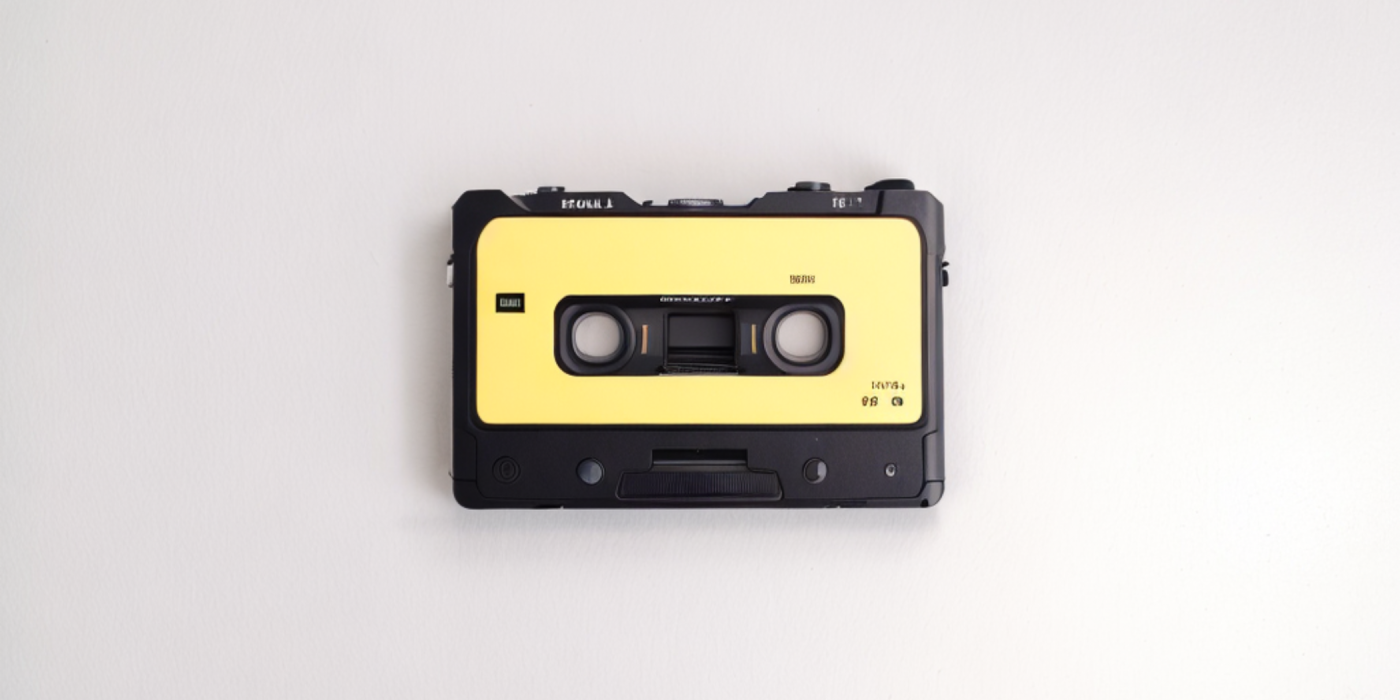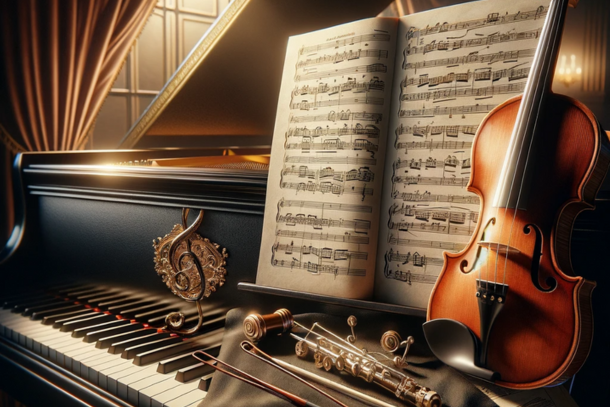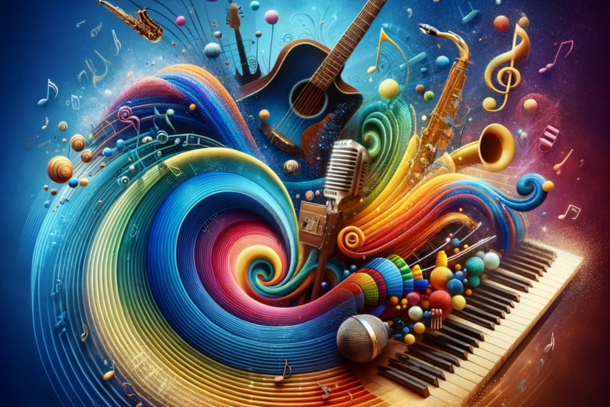The Unforgettable Era: A Comprehensive Background on Cassette Tapes

In an age of digital streaming and high-resolution audio, it's easy to forget the humble origins of portable music. Before the ubiquity of smartphones and the convenience of MP3s, one medium ruled supreme in the world of personal audio: the cassette tape.
A Tale of Tapes: Exploring the Role of Cassettes in Music History
The Role of Cassette Tapes
Cassette tapes, those small, compact devices full of magnetic tape and music, were instrumental in defining and shaping the soundscape of the 70s and 80s. Their portability and ease of use made music more personal and accessible than ever before. For the first time, music lovers could create their own mixes and carry their favourite tracks around, effectively becoming curators of their own musical worlds. As such, the cassette tape holds a pivotal place in the history of recorded music.
The Purpose of This Article
This article is an exploration of the cassette tape's journey, from its creation to its peak popularity, its inevitable decline and unexpected resurgence. We'll delve into its impact on both the industry and the listeners, highlight its advantages and drawbacks, and look at its enduring cultural legacy. Our aim is to paint a vivid picture of this iconic medium that played a key role in democratising music consumption.
A Background on Cassette Tapes
Providing a comprehensive background on cassette tapes is more than a historical exercise. It's an opportunity to understand the evolution of music consumption, and to appreciate the technological strides and cultural shifts that have shaped our relationship with music over the decades. So, get ready to rewind and press play as we journey into the past of this much-loved medium.
The Birth and Early Development of Cassette Tapes
The Genesis of Cassette Tapes
The inception of cassette tapes can be traced back to the early 1960s. It was in 1962 when Philips, the Dutch electronics company, introduced the compact audio cassette, a ground-breaking format for magnetic tape recording. Compact and easy-to-use, these cassette tapes revolutionised the way audio was recorded and played back. No longer did one need to wrestle with large reels of tape; now, music and voice could be captured on a device small enough to fit in the palm of one's hand.
Technological Innovations and Early Challenges
Creating the cassette tape involved a series of technological innovations. From the precision mechanism that moved the tape past the recording and playback heads, to the invention of new tape formulations that ensured good sound quality, every aspect of the cassette was a feat of engineering.
However, early cassettes faced significant challenges. The initial designs provided only monaural sound, and the sound quality was often compromised by background noise. These hurdles had to be overcome to make the cassette a viable alternative to vinyl records and reel-to-reel tapes.
Triumph of Ingenuity: The Compact Cassette
With determination and a series of technological advancements, such as the introduction of noise reduction technologies and the shift to stereo sound, the compact cassette began to gain acceptance. By the end of the 1960s, cassette tapes had begun their ascendancy, paving the way for a new era in audio recording and playback. This period marks a remarkable chapter in the history of audio technology, truly heralding the inception of cassette tapes as we know them.
The Golden Age of the Cassette Tape
Peak Popularity
The late 1970s and 1980s truly marked the zenith of the cassette tape era, often nostalgically referred to as the "Golden age of cassette tapes". Cassettes were not merely a music medium; they became a cultural symbol, mirroring the vibrancy and dynamism of the era. People didn't just listen to music; they experienced it, curated it, and shared it, with mixtapes becoming a unique form of personal expression.
Walkman and Car Cassette Players
Undeniably, the advent of Sony's Walkman in 1979 played a pivotal role in skyrocketing the popularity of cassettes. It made music personal and portable, enabling people to soundtrack their lives on the go. Similarly, car cassette players, ubiquitous in vehicles during this period, transformed road trips and commutes, creating shared auditory experiences.
Cultural Phenomena and Music Trends
The cassette era bore witness to many key cultural phenomena and music trends. From the Punk and New Wave movements to the explosion of pop and hip hop, these genres thrived in the format of the cassette tape. Notably, the DIY ethos of the Punk scene resonated with the tangible, recordable nature of cassettes. The simplicity of recording on tapes also led to the emergence of "bedroom pop", with budding artists creating and distributing their music independently.
The golden age of cassette tapes was more than a period; it was a cultural revolution in how we produce, consume, and perceive music. And its reverberations can still be felt in today's music landscape.
Advantages and Limitations of Cassette Tapes
The Charm of Cassettes
Cassette tapes might seem quaint in today's era of digital music, but they boasted some significant advantages that contributed to their widespread popularity. To start with, their compact size made them highly portable - a quality that was leveraged by the advent of portable cassette players like the Walkman. Suddenly, music could be taken anywhere, completely changing our relationship with soundtracks and albums.
Moreover, cassette tapes were reasonably durable, with the ability to withstand more physical mishandling than vinyl records. Their affordability also played a crucial role in their success. Music lovers could purchase blank tapes and record their favourite tunes, thus personalising their music collections in a way that wasn't possible before.
Facing the Music: The Limitations
Despite their many advantages, cassette tapes did have notable limitations. The most significant of these was sound degradation. The more a tape was played, the more its sound quality diminished due to the physical wear and tear on the magnetic tape. Tapes could also become tangled in the player's mechanism, resulting in the infamous 'cassette spaghetti'.
Additionally, cassette tapes had a limited capacity. With only a set amount of space on each side, you were restricted to a particular number of songs, which required flipping the tape halfway through an album. This constraint often dictated the sequence and number of songs that artists could include on an album.
While cassette tapes represented a significant milestone in the evolution of music, their advantages were tempered by these limitations, paving the way for the next innovations in music technology.
The Decline and Resurgence of Cassette Tapes
The Downfall
The predominance of cassette tapes began to fade in the early 90s. The arrival of the compact disc, with its promises of superior sound quality, durability, and ease of use, contributed significantly to the decline of the cassette tape. The shiny, convenient CD quickly gained traction, eclipsing the popularity of its older analogue cousin.
Moreover, the dawn of the digital age played a crucial role. With the advent of MP3 players and the increasing availability of digital downloads, music consumption underwent a significant transformation. As listeners embraced the convenience and immediacy of digital music, cassettes were seen as cumbersome and outmoded.
The Revival
Curiously, in recent years, we've seen a nostalgic resurgence of cassette tapes. This resurgence isn't just about the retro aesthetic or the nostalgic appeal of creating mixtapes. The distinct sound quality of analogue recordings, described as warmer and more 'real' by audiophiles, plays a part in this revival.
Furthermore, the tactility of cassettes, the physical act of inserting a tape into a player, offers an experience that is lost in the world of digital streaming. Today, they're cherished by collectors and music enthusiasts, often released as limited editions by artists across various genres.
This unexpected resurgence of cassette tapes underscores their lasting impact on the music industry and their enduring charm among listeners. Amid the ultra-modern landscape of digital music, the humble cassette tape stands as a testament to the power of nostalgia and the appeal of physical media.
Cassette Tapes in the Modern Day: A Nostalgic Revival
Cassette Tapes in Contemporary Music and Art
In recent years, we've seen an intriguing resurgence of cassette tapes in the realm of contemporary music and art. These small plastic boxes are no longer just relics of a bygone era, but are once again finding their place in the modern musical landscape. Some independent artists and labels, drawn to the tactile and intimate nature of tapes, have begun releasing new music on cassettes. Moreover, they've become a medium of choice for experimental musicians due to the unique sound characteristics and imperfections, such as hisses and warbles, that digital music can't replicate. Keyphrase: "Cassette tapes in modern day."
The Cultural and Collectible Value of Cassette Tapes Today
In addition to their functional use, cassette tapes today carry a significant cultural and collectible value. Just like vinyl records, they've become collectors' items for those yearning for a tangible connection to music in our increasingly digital world. For many, the act of inserting a cassette into a tape deck, pressing play, and experiencing music in real time is a deeply nostalgic act, a hark back to simpler times. Moreover, cassettes have found their way into visual art, with artists using them to create everything from sculptures to installations, thereby encapsulating the past and the present in a unifying artistic expression.
Ultimately, the renewed interest in cassette tapes is a testament to their enduring charm. They remind us that, sometimes, it's about more than just convenience or sound quality - it's about the connection, the physicality, and the experience.
Unwinding the Tape: Reflecting on the Legacy of Cassette Tapes
A Recap: The History and Impact
The cassette tape, born out of a desire for portable and accessible music, has truly lived a fascinating life. From its humble beginnings in the 1960s, it gained immense popularity by the 1980s, thanks largely to the advent of portable devices like the iconic Walkman and in-car cassette players. Cassettes democratised music, making it possible for anyone to record and distribute their tunes. However, despite its immense popularity, it couldn't withstand the rapid technological advances that brought us CDs and digital downloads. Its decline was as swift as its rise. But it's not all doom and gloom; the recent resurgence of cassette tapes in popular culture highlights their indomitable spirit.
The Lasting Cultural Legacy
The legacy of the cassette tape goes far beyond its practical usage. Its cultural impact is equally significant. Cassettes are symbols of a bygone era, reminders of a time when music consumption was a physical and tactile experience. They have inspired countless artists, musicians, and even fashion trends. Today, they hold a unique charm for collectors and music enthusiasts who long for a touch of nostalgia in the increasingly digitised world.
So, as we reach the end of our journey, it's clear that the legacy of cassette tapes is far from being erased. These humble plastic boxes filled with magnetic tape have not only changed how we listen to music, but have left an indelible mark on our cultural landscape. From this perspective, the story of the cassette tape is a testament to the power of music and its capacity to evolve while holding on to its past.
Related to this article are the following:
I do hope you have enjoyed this article and hope that you will subscribe to my newsletter so you can get the latest information about all things naturally relaxing.
Stay in touch, join the Naturally Relaxing Newsletter
Newsletter Signup
Post Your Comments
or post as a guest
Be the first to comment.
Latest articles in Music

Serene Symphony: Exploring 10 Timeless Classical Pieces for Unwavering Tranquillity

The Best Music for Meditation: A British Expert's Guide to Deepening Your Practice

The Best Music for Studying: An Expert's Guide to Optimal Concentration & Memory Boost

Melody & Dreams: The Musical Route to a Restful Night

The Healing Power of Music: Combatting Stress & Anxiety in Modern Britain






